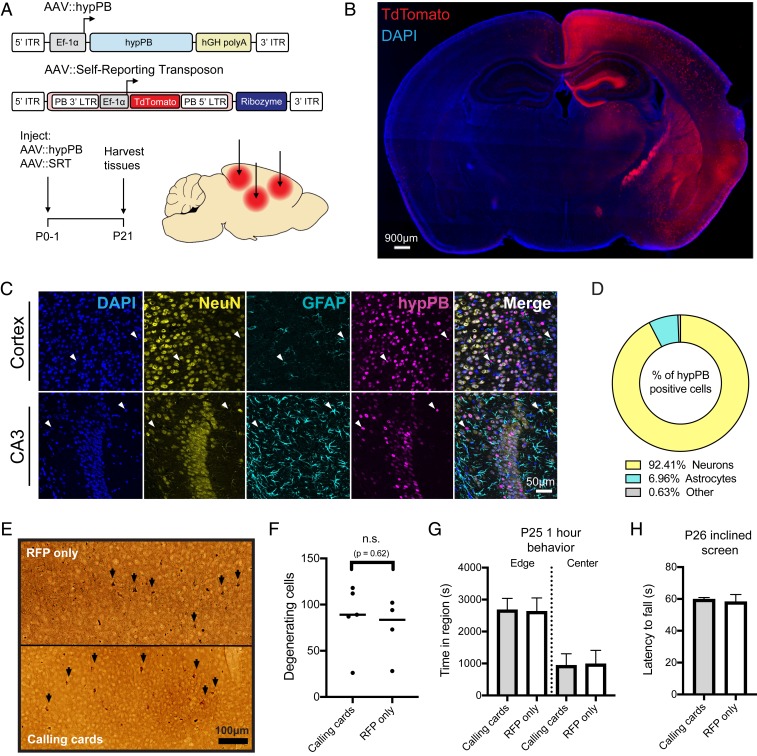Fig. 1.
Co-AAV9 intracranial injection efficiently delivers calling cards to the cortex. (A) Experimental paradigm and AAV constructs. Arrows represent approximate AAV injection sites. ITR, inverted-terminal repeat; LTR, long-terminal repeat. (B) Coronal section of a brain injected unilaterally at P0-1 with AAV::hypPB and AAV::SRT, displaying widespread expression of SRT-derived TdTomato fluorescence throughout the brain. Abnormality at right edge is tissue damage that occurred during sectioning and artifact has been removed. DAPI, 4′,6-diamidino-2-phenylindole. (C and D) Coimmunofluorescence showing hypPB expression in neurons and astrocytes. (C) Representative images display colocalization of hypPB with neuronal (NeuN) and astrocyte (GFAP) markers in the cortex and hippocampus. hypPB is myc-tagged, allowing for visualization with myc-specific antibodies. Arrowheads show examples of hypPB-positive astrocytes. (D) The majority of hypPB(+) cells transduced with AAV9 are NeuN(+) neurons and GFAP(+) astrocytes; n = 1,005 myc(+) cells, counted across cortical image fields from 5 mice. (E) Representative images of silver staining in the dorsal cortex to screen for degenerating cells (black arrows) in mice intracranially injected at P0-1 with red fluorescent protein (AAV::RFP only) (Top) or calling cards viruses (AAV::hypPB and AAV::SRT) (Bottom) and killed at P28. (F) Quantification of silver-positive cells in the dorsal cortex revealed injection with either virus produces limited neurotoxicity that did not significantly differ between groups (two-tailed, unpaired Student’s t test, P > 0.05; n.s., not significant). (G and H) Mice injected at P0-1 with AAV calling cards (n = 21) or control, RFP-only (n = 24) viruses displayed no significant differences in anxiety-related behavior (center/edge dwelling) (G) or motor skills (inclined screen test) (H) relative to control. See SI Appendix, Fig. S3 for further behavioral and developmental assessments of these groups. All group comparisons were done with two-tailed, unpaired Student’s t test, with Bonferroni-corrected α = 0.05 as a significance threshold (including all tests in SI Appendix, Fig. S3). kB, kilobase.

